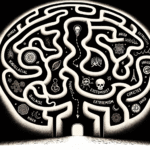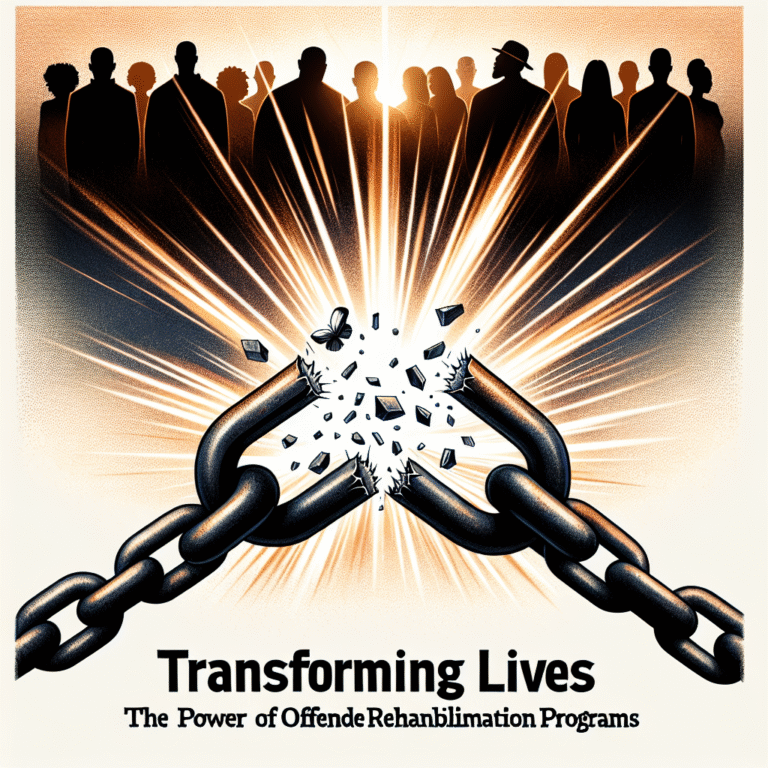
Introduction
Every year, millions of people around the globe are touched by the tragedy of suicide. It stands as a stark reminder of the fragility of human life and the complexities of mental health. As society evolves, so too does our understanding of the multifaceted reasons behind these devastating decisions. One essential tool in this exploration is the psychological autopsy—a process that endeavors to decode the tragic circumstances surrounding a death by suicide. In this article, we will delve into the nuances of psychological autopsy in suicide investigations, revealing its vital role in understanding the mind of those lost to suicide while also fostering a culture of empathy and prevention.
What is Psychological Autopsy?
At its core, a psychological autopsy is a forensic methodology aimed at reconstructing an individual’s psychological state prior to their death. It’s not about examining physical evidence; rather, it focuses on gathering and analyzing evidence of psychological conditions and circumstances leading to suicide. This method involves comprehensive interviews with family, friends, healthcare providers, and anyone who had insight into the deceased’s mental state.
Key Objectives of Psychological Autopsy
Understanding Mental Health Conditions: Investigators look for underlying mental health disorders that could have contributed to the individual’s decision to end their life.
Identifying Circumstances: External factors, such as significant life events, personal losses, or environmental stressors, are examined closely.
- Preventive Measures: Ultimately, the insights gained can inform future prevention strategies, helping to support those who might be struggling.
Case Study: The Tragic Case of Kevin H.
Kevin H., a 28-year-old man, seemed to have a promising future—a stable job, a supportive family, and a vibrant social life. However, he struggled silently with anxiety and depression, conditions that were undiagnosed and untreated. After his sudden death by suicide, a psychological autopsy revealed a history of trauma, including bullying during his teenage years and strained familial relationships that he never disclosed to anyone.
This case emphasizes the necessity of understanding the complexities lurking beneath the surface, highlighting why decoding tragedy through psychological autopsy is essential for effective intervention and support.
The Process of Psychological Autopsy
Step 1: Gathering Information
The first crucial step involves collecting data from various sources. These may include:
- Interviews with family and friends
- Medical and psychiatric records
- Police reports and coroner’s findings
Step 2: Analysis and Interpretation
Once the information is collected, it’s analyzed to identify underlying psychological issues, behavioral patterns, and risk factors. Professionals often look for signs of:
- Mood Disorders: Conditions like depression or bipolar disorder.
- Substance Abuse: Alcohol or drug misuse that exacerbates mental health challenges.
- Life Stressors: Recent losses or significant changes that may have pushed the individual into despair.
Step 3: Recommendations for Future Prevention
Finally, the findings are summarized to create a report that may inform public health initiatives and policies aimed at preventing future tragedies.
Table: Psychological Autopsy Methodology Overview
| Step | Description |
|---|---|
| Information Gathering | Collect data from various sources (family, medical, police) |
| Analysis | Identify psychological factors and behavioral patterns |
| Recommendations | Provide insights for preventive measures and public health policies |
The Importance of Context
Understanding the context of a suicide is crucial; it doesn’t exist in a vacuum. Societal factors, cultural stigmas, and availability of mental health resources play significant roles in how individuals cope with their struggles.
Cultural Considerations
In various cultures, discussing mental health is often stigmatized, creating barriers to seeking help. A psychological autopsy can unveil the cultural factors that may have contributed to the individual’s silence about their suffering, which is often overlooked but critical in formulating community-specific interventions.
Case Study: Maria T.
Maria, a 23-year-old woman from a conservative community, felt an immense pressure to conform to societal expectations. A psychological autopsy revealed that her struggles with mental health went unnoticed due to cultural stigmas surrounding seeking psychological help. This case illustrates the nuanced interplay between culture and mental health, demonstrating a vital aspect of decoding tragedy through psychological autopsy.
Real-World Applications of Psychological Autopsy
The insights gained from psychological autopsy are instrumental in developing effective mental health strategies. Public health organizations and governments utilize findings to guide their actions and inform policy changes. Notably, psychological autopsies contribute to:
Training for Mental Health Professionals: Offering better understanding and approaches to treating individuals with suicidal tendencies.
Community Awareness Programs: Fostering an environment where mental health discussions are normalized and where people feel safe to express their struggles.
- Crisis Intervention Strategies: Developing targeted interventions to aid high-risk populations.
Overcoming Challenges in Psychological Autopsy
Stigma and Confidentiality
One of the challenges in conducting a psychological autopsy lies in ensuring the confidentiality of sensitive information. Family members may be hesitant to share details out of fear of stigma. Building a trustful relationship with the family and emphasizing the importance of the findings for future prevention is crucial.
Resource Limitations
Many regions still lack adequate mental health resources, making the application of psychological autopsy more challenging. Advocating for mental health funding and services is essential in creating an environment where more comprehensive investigations can take place.
Table: Challenges in Conducting Psychological Autopsy
| Challenge | Solutions |
|---|---|
| Stigma and Confidentiality | Build trust, emphasize importance for prevention |
| Resource Limitations | Advocate for mental health funding |
The Future of Psychological Autopsy
As we advance into the future, the relevance of psychological autopsy in suicide investigations continues to grow. With improving technology and a deeper understanding of psychology, the methodologies employed will likely become more refined.
Integration with Technology
Emerging technologies, such as data analytics and artificial intelligence, can help analyze large datasets to identify patterns in suicide cases. This integration could streamline the process of psychological autopsy, making it more reliable and efficient.
Emphasizing Holistic Approaches
Moving forward, there should be a focus on holistic approaches that incorporate psychological, social, and environmental factors. This comprehensive strategy will ensure greater effectiveness in understanding and preventing suicides.
Conclusion
Decoding tragedy through psychological autopsy is not merely an academic exercise; it is a meaningful quest to understand the deeply woven narratives that precede a suicide. By investigating the psychological, social, and cultural contexts of these tragedies, we can create a roadmap for prevention that extends beyond individual cases and towards communal healing.
Take Action
As we’ve explored, psychological autopsy helps unlock valuable insights into the human psyche and tragedy, and it serves as a powerful reminder of the importance of open conversations around mental health. Let this knowledge inspire you to not only consider your mental well-being but to advocate for a culture where mental health discussions are normalized and where no one has to face their struggles in silence.
FAQs
1. What is a psychological autopsy?
A psychological autopsy is a methodical process aimed at reconstructing an individual’s psychological state before their death, especially in cases of suicide, to understand the underlying factors that contributed to the tragedy.
2. How is a psychological autopsy conducted?
It involves gathering information from various sources, including interviews with family and friends, medical records, and behavioral observations, followed by an analysis of the data to identify risk factors and mental health issues.
3. Why is psychological autopsy important in suicide investigations?
It helps illuminate the complexities of mental health, societal influences, and personal stressors, ultimately informing prevention strategies and mental health policies.
4. Can psychological autopsy improve future suicide prevention?
Yes, the insights gained can lead to more effective mental health interventions, public awareness campaigns, and better training for healthcare providers.
5. Are the findings from psychological autopsy kept confidential?
Yes, ethical considerations emphasize confidentiality and sensitivity, ensuring that families are comfortable sharing critical information for the sake of future prevention.
By diving deep into Decoding Tragedy: Understanding Psychological Autopsy in Suicide Investigations, we not only seek answers but also pave the way for empathy and action in the fight against suicide.

















